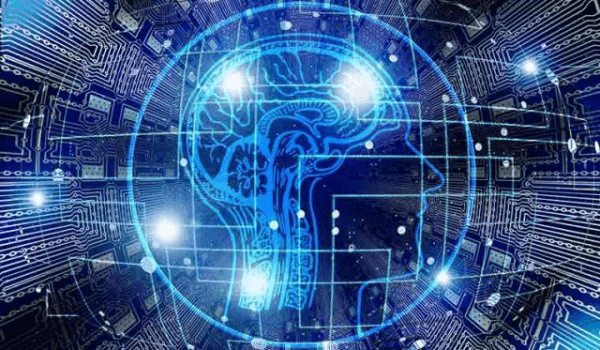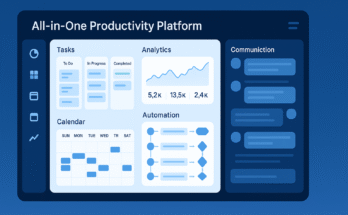Thisera of digital technologyhas brought confusion to those people who, due to so manyinnovations, still cannot distinguish some concepts. In this article we will address theconcepts and differences between big data, machine learning and deep learning. Technologies that are often confused with each other because all three are related to data processing.
Concepts of big data, machine learning and deep learning
The 5 largestproviders of big data technologies in Spain obtain almost 60%of their income through the commercialization of these solutions, as indicated byIDC. While, on the other hand, the companyAppianestimates that this year 2019 will close with theuse of artificial intelligence in 40% of digital transformation initiatives.
Given this panorama wherethe applications of technologies such as big data and machine learning proliferate,it becomes increasingly necessary to know the difference between their concepts.
what is the big data?
The consulting firm IDC predicts that, by 2020,the value of the big data market will reach 202 billion dollars.But what is big data?
Big data basically refers to massive amounts of digital data that conventional computer systems cannot process. Therefore, such processing can only be done using special techniques and systems for big data.
This complexity is due to the three main characteristics of this type of data, which are known as “the 3 Vs of big data”:
- Volume: the amount of data is enormous, a company can collect petabytes (1 million Gb) or exabytes (1 billion Gb) of information.
- Speed: data is produced extremely quickly, large amounts of data are being generated every second.
- Variety– Data is complexly heterogeneous. They have different formats, sizes, typologies, structures and come from multiple sources.
Combining big data techniques with machine learning is the best way to process these 3 V’s.
What is machine learning?
Machinelearning (ML)or automatic learning is a technique within the area of artificial intelligence (AI) that seeksto provide computers with the ability to “learn”, just as a person does.
In this sense, a machine learning algorithm develops the ability to modify itself in order to adapt to the data it is processing. The goal of this is to be able to solve a computational problem on your own.
This “problem” may consist of finding hidden patterns of behavior or executing complex tasks automatically. Thus,a system with big data and machine learning can capture problems with the data and at the same time solve them.
Meet ourchatbot for e-commerce that uses machine learning to solve up to 80% of user queries.
One of the subfields of machine learning is that ofartificial neural networks (ANN), within which there is, in turn, another subfield called deep learning (DL).
What is deep learning?
As we mentioned, deep learning or deep learning is a subfield that belongs toartificial neural networks. This subfield is generated when there are neural networks with large numbers of layers of nodes (“neurons”) in a system. The greater the number of layers, the greater the depth of the neural network.
Thus, for the system to be able to process such deep networks, deep learning techniques must be implemented.
In this way, thanks to deep learning, a computer system can be able to predict trends, phenomena or circumstances. As well as learning to improve processes without human assistance.
Theseanalytical capabilitiesare increased in thosesystems that combine big data with machine learning and deep learning.
How is big data different from machine learning and deep learning?
Understanding the three concepts that we have seen previously, we have that themain differences between big data, machine learning and deep learningare:
- Big data extracts and processes large amounts of very complex data and then organizes it, in order to facilitate its consultation by people and programs. However,big data does not perform any kind of intelligent analysis on them.
- Machine learning runs intelligent analysis on large amounts of data to find patterns and trends, in order to support business decisions. However,machine learning does not extract or process the data to apply order to it.
- Deep learning uses data to learn from it without human intervention, in order to self-improve the system and the algorithm. However,deep learning also does not extract or process the data to make your query available.
In short, while big data is concerned with data sources and their nature, machine and deep learning are concerned with analytics and computational learning.This is the biggest difference between big data, machine learning and deep learning.
The relationship of big data with machine learning and deep learning occurs as a result of their same differences.In other words, what differentiates them is the same reason why they complement each other as computer techniques.
In this sense, we have to:
- Bigdataextracts and processes data to make it available to machine learning algorithms. It can be said that big data is the source of data ingestion for ML and DL.
- Machinelearningtakes the data processed by big data and analyzes it to generatebusiness insightsor learn to perform certain tasks automatically.
- Deeplearningingests the most important data from big data to learn about it at much deeper levels and to perform more complex tasks.
We’re giving you this eBook onhow we’ve combined big data with machine learning to improve demand forecasting in a company.
Example of the relationship between big data and machine learning
From the combination of big data and machine learning (and sometimes deep learning) comes the discipline ofBig Data Analyst. This consists precisely in the intelligent analysis of large amounts of data in real time.
For example, large companies such as Google,Facebook,Amazon,eBay,Netflix,Spotify, among many others use big data techniques to extract and process user data regarding:
- Search terms.
- Requested content.
- Interaction levels (likes, shares, saves, comments, etc.).
- Hours of use.
- connection devices.
Then, to all this type of data, they applyartificial intelligencetechniques such as machine learning to:
- Find consumption habits and behavior patterns.
- predict trends.
- Detect unmet needs.
- Recommend products in a personalized way.
According to IDC Research Spain, the intelligent analytics market that combinesbig data with machine learning is growing by 48% each year in Spain. Therefore, companies that want to stay competitive mustlearn to recognize both the differences and the relationships between big data and machine learning. This in order to get the most out of both.




